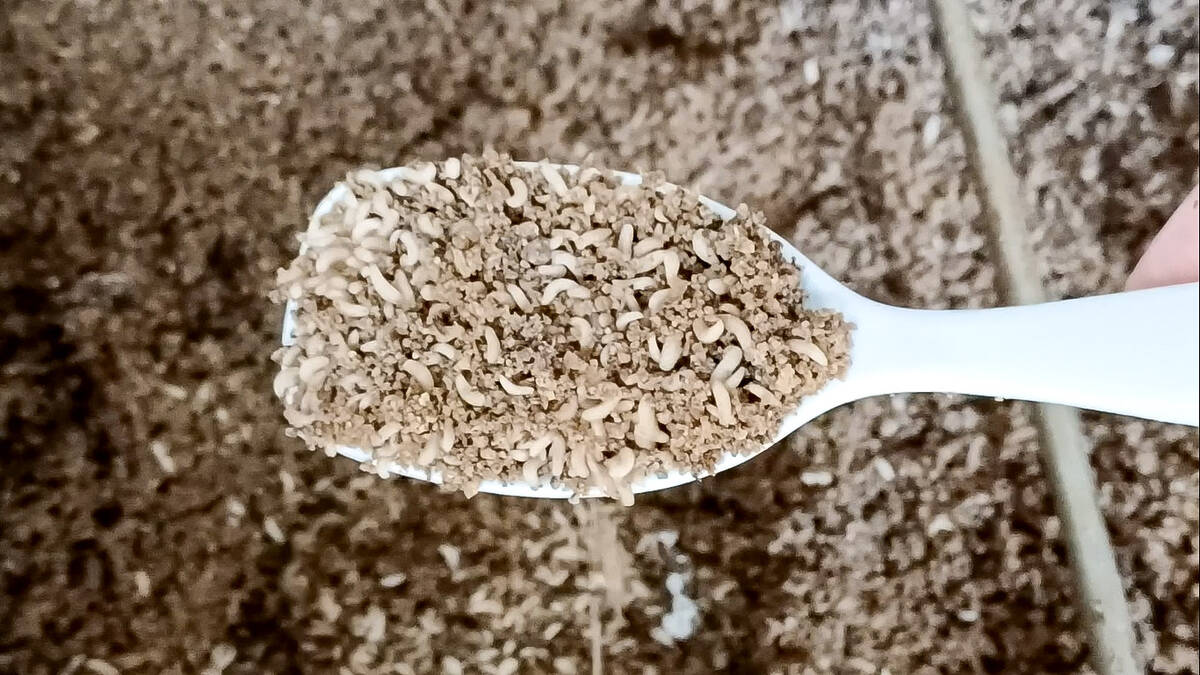Some of the world’s top soil scientists and conservation agriculture exponents convened for the sixth World Congress on Conservation Agriculture in Winnipeg last week. The message from speakers was on one hand sobering, if not frightening — massive soil erosion continues around the world, and in both developed and undeveloped countries. The good news is that there is a solution — conservation agriculture practices which disturb the soil as little as possible to protect it from wind and water.
It was encouraging to hear discussion of the real issue in maintaining and increasing world food production. In the end, it isn’t varieties or pesticides or even fertility, at least the simple NPK type. Doing those things right helps, but if the plant doesn’t have healthy soil to deliver water and nutrients, they’re just wasted.
Read Also

Bug farming has a scaling problem
Why hasn’t bug farming scaled despite huge investment and subsidies? A look at the technical, cost and market realities behind its struggle.
While every conference participant would agree with that, there were some unnecessary diversions from the common theme. Some proponents of what we’ll call “conventional” conservation agriculture practitioners were a bit too trigger happy in criticizing organic farming. While there is no question that technology such as pesticides and GM crops is often the subject of over-the-top statements, they mainly come from consumers or unscrupulous marketers, not from organic farmers themselves.
In fact, the growing success of the conservation agriculture concept worldwide is partly based on collaboration between conventional and organic farmers. One of the main themes of the conservation conference was the use of cover crops, which are now being widely adopted in the U.S. Organic farmers get much of the credit for developing the idea.
- More from the Manitoba Co-operator: Conservation Agriculture gaining ground
Keynote speaker Howard Buffett helped put things into perspective. While a member of one of the world’s wealthiest families, Buffett brings a lot of “street cred” to the discussion of farming and the environment — he works the land on his Illinois farm and operates research farms in the U.S. and Africa.
While Buffett said he wouldn’t try it himself, “I’m all for organic farming,” he said, emphasizing the need for diversity. “We can’t look at things that are different and think they threaten us… we have to have a dialogue.”
He also criticized U.S. agriculture’s adoption of new practices, saying that if U.S. smartphone technology was as advanced as farming technology, the phones would be the size of a truck. As for the Gulf of Mexico’s “dead zone” caused by excess agricultural nutrient run-off, “If you did this in any other business you wouldn’t get away with it,” Buffett said.
What farmers are getting away with was a recurring theme throughout the meeting. One speaker said agriculture is the main source of water pollution in the U.K., and another said that in France, authorities often issue warnings not to use well water because of nitrate contamination. He said that in France, conservation agriculture practices have been adopted on only one per cent of the acreage.
Another recurring theme was the importance of crop rotation as a component of conservation agriculture. Prairie canola growers pushing their rotations are familiar with the dilemma, but they are paragons of virtue compared to farmers on one- or two-crop rotations elsewhere. This raises some interesting questions. If farmers are in subsidy programs, should there be requirements to do rotations better? If that happened, what would be the market implications for Canadian farmers if more Americans add canola or pulses into their rotations? Should rotations include forages, and how would that affect the livestock industry?
Perhaps the most encouraging theme from the conference is that conservation agriculture is now seen as applying to farms of all sizes in all countries. A failed Canadian wheat project in Tanzania several years ago is just one of several in which machinery was brought in and is now sitting idle and rusting because it was too large, too hard to maintain and otherwise inappropriate for local conditions.
Implementing conservation agriculture techniques can’t depend on having large machinery on large acreages created by driving smallholder farmers off the farm and into the city. On the other hand something needs to be done to stop the excess oxen-driven tillage that causes the annual loss of billions of tonnes of topsoil in Africa. Accordingly, there are now projects to develop one- or two-row zero-till planters that can be pulled with oxen or inexpensive two-wheel tractors which look like a large rototiller.
We’ve been hearing a lot about the need to double food production to feed nine billion by 2050, but most of the discussion has been about doing things above the soil surface. It’s refreshing to see some focus on the more important tasks below.















